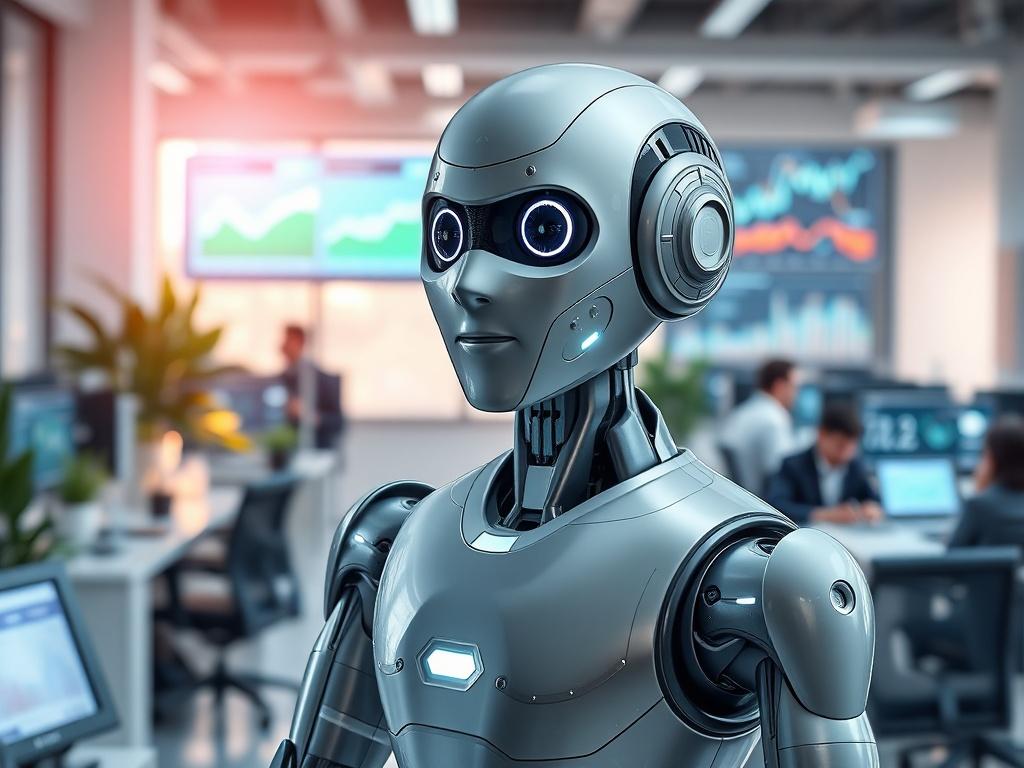Welcome! Check out our latest blog.
Read more
In today’s rapidly evolving business landscape, the rise of AI employees is transforming the way organizations operate. A blog post titled AI Employees To the Rescue explores how these advanced technologies are not only streamlining operations but also enhancing workplace efficiency. Companies are beginning to recognize that AI can serve as a valuable partner, supplementing human efforts and allowing teams to focus on higher-level tasks. As traditional roles evolve, businesses can leverage AI to drive innovation and improve overall productivity.
This collaboration between humans and AI technology is revolutionizing industries across the board. By celebrating this partnership, we can inspire organizations to embrace the advantages of integrating AI employees into their workforce. In the following sections, we will delve into specific examples of how AI enhances productivity, support decision-making processes, and foster creativity. Prepare to be inspired as we share real-world success stories that illustrate the power of AI employees coming to the rescue in the workplace.
The transformative potential of AI employees in the workplace
AI employees are revolutionizing the workplace by streamlining processes and enhancing productivity. Businesses are increasingly adopting AI technologies to handle repetitive tasks, allowing human workers to focus on more strategic and value-driven activities. This shift not only increases efficiency but also fosters innovation as employees have more time to brainstorm and implement creative solutions. The integration of AI into various roles, from customer service to data analysis, demonstrates its vast potential to transform traditional work environments.
Moreover, AI employees can analyze vast amounts of data at lightning speed, providing insights that humans may overlook. These technologies can identify patterns and trends, enabling companies to make informed decisions quickly. As AI systems continue to evolve, they are becoming more adept at learning from experience, which boosts their ability to perform complex tasks over time. This transformation poses both opportunities and challenges; organizations must adapt their workflows and strategies to harness the full potential of AI employees effectively. By embracing these changes, businesses can not only survive but thrive in an increasingly competitive landscape.
Celebrating the collaboration between humans and AI technology
The collaboration between humans and AI technology represents a groundbreaking shift in how we approach work. Rather than viewing AI as a threat to jobs, forward-thinking organizations recognize the value of integrating AI employees into their teams. These intelligent systems complement human capabilities, allowing individuals to focus on higher-level tasks that require creativity and critical thinking. By automating repetitive and mundane tasks, AI liberates employees from routine work, enabling them to concentrate on problem-solving and innovation. This partnership enhances overall productivity while fostering a more dynamic workplace where human skills and AI technologies flourish together.
In this new landscape, employees increasingly embrace AI as an ally. Training programs that educate teams on effectively utilizing AI tools empower them to leverage this technology to its fullest potential. As a result, organizations witness improved morale and job satisfaction among their workforce. Employees appreciate having AI handle time-consuming tasks, giving them more time to engage in collaborative projects and skill development. By celebrating this synergy, companies create a culture of continuous learning and adaptation, positioning themselves favorably in a rapidly evolving job market.
Real-world success stories of AI employees enhancing productivity
Numerous organizations have successfully integrated AI employees into their operations, demonstrating the transformative power of these technologies. For example, a major financial institution adopted an AI-driven chatbot to handle customer inquiries. This implementation not only reduced the average response time but also freed up human agents to focus on more complex tasks. As a result, productivity surged, and customer satisfaction scores improved significantly. By allowing AI to handle routine questions, the company witnessed a marked increase in overall efficiency, showcasing how AI employees can optimize workflows and enhance service levels.
In the manufacturing sector, AI employees have also made a notable impact. A leading automotive manufacturer employed AI-powered robots to assist in assembly line operations. These robots improved precision and speed while minimizing human error. The integration of AI technology led to a 20% increase in production rates, allowing the company to meet rising consumer demand without compromising quality. Such examples illustrate that AI employees are not just a futuristic concept; they are actively reshaping industries and driving productivity improvements today. The collaboration between AI and human workers fosters innovation, creating a dynamic environment that is poised for success.
Stay updated on our news and events! Sign up to receive our newsletter.
Thank you for signing up!
Something went wrong. Please try again later.